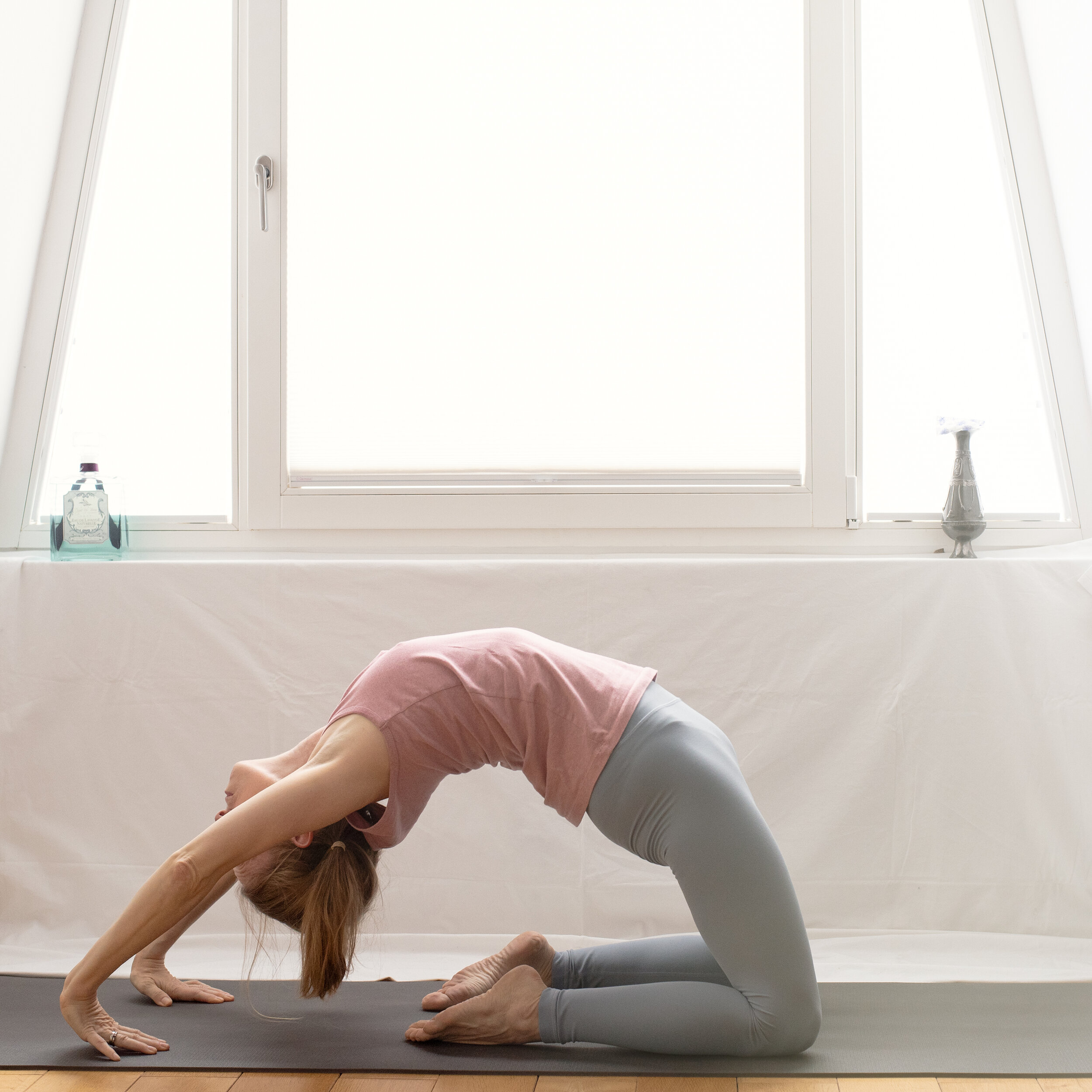I became stronger during the last months. I got stamina. To interrupt my practice only because 90 minutes are over makes no sense. When I went to Mysore classes a few years ago I practiced 2 1/2 hours. I was one of the first in the yoga room. The teacher was still practicing closing sequence, while I started with the sun salutation. I was one of the last who left the room. Yogini came and left the room, I was always there. The classic approach in Ashtanga Yoga is to add one asana after the other. This makes the practice longer and longer. Every day I practiced the entire primary series in the beginning. After two hours I was exhausted. Then I could finally work on these deep deep back bending asanas like kapotasana.
I altered these strategy. One day I focus on primary, the next day on second series. The back bending asanas come very quickly after the standing asanas when I practice second series on Sundays, Tuesdays and Thursdays. I feel fresh, I still have strength and will power. I also have the energy to prepare these asanas with extra exercises. I realize that I progress. This strategy makes a difference.
Sometimes I stare at my pictures to find out what exercises could make the back bending asanas more approachable.
I do always splits to stretch the front side of the hips.
I practice kapotasana against a wall to stretch the front side of the upper body.
It’s so important to hold the asanas for minimum 1 minute. One minute can be soooooo long, but it makes sense. I read this advice in many many books on gymnastic i.e..
The very good news is that it’s easier to start with my practice. My practice became again a daily routine that I don’t question every day.
The asanas feel better. It’s no more so uncomfortable and unpleasant to be in a back bending position. It feels even good. (I know that tomorrow I might right the opposite. )
Today I’ll reset my timer. 2 hours of yoga in the morning seems to be a reasonable time without feeling whipped through all these asanas that I want to exercise. I don’t have to rush, I feel as if I have plenty of time for all the exercises.
On Thursdays and Fridays I try to practice as close to the Ashtanga series as possible. Yet during my other practices I work on asanas. I test variations. I stretch parts of the body isolated. Sometimes I even add strength exercises. I hold asanas longer than 5 breaths. I repeat them up to three times. This is very effective. Each time a pose gets easier and I can go deeper.



